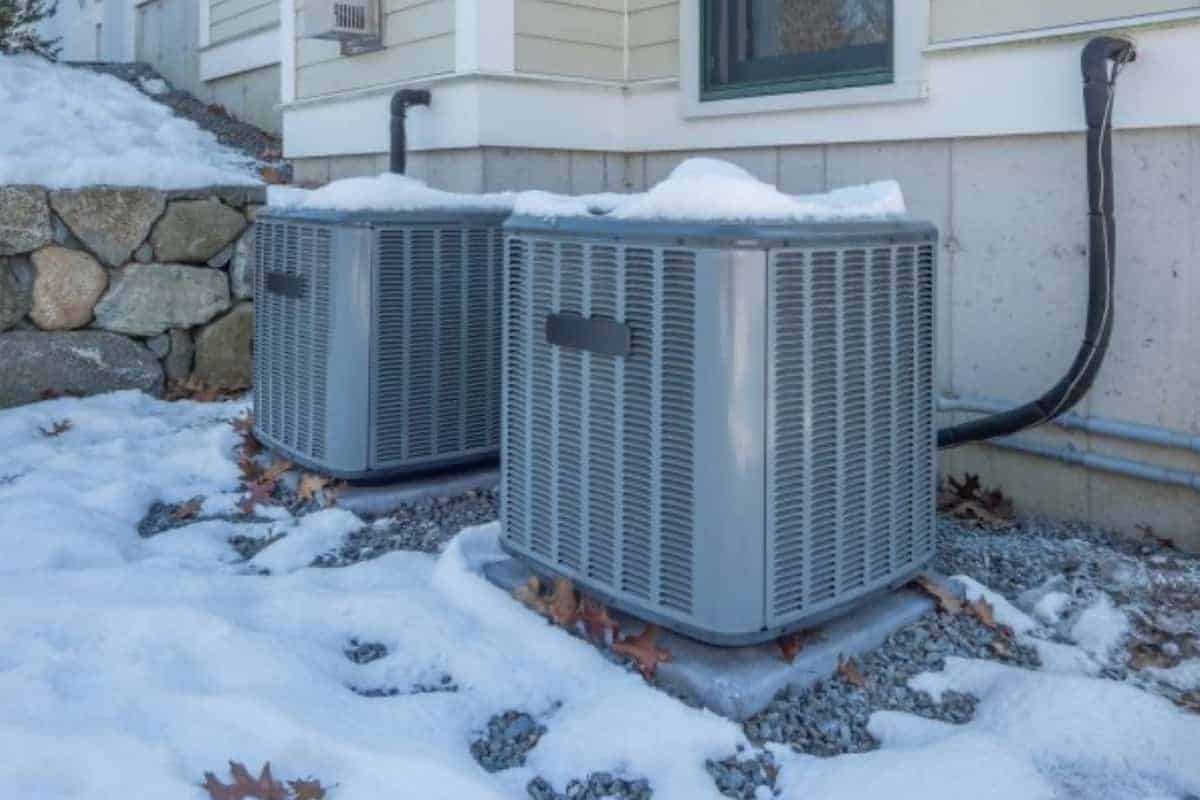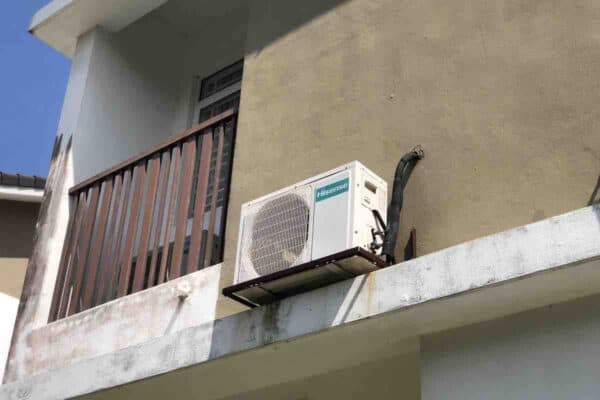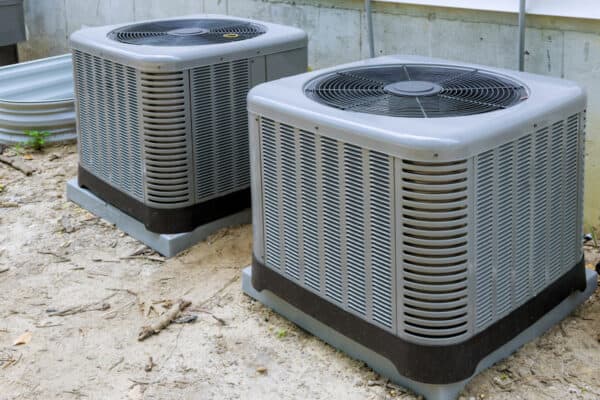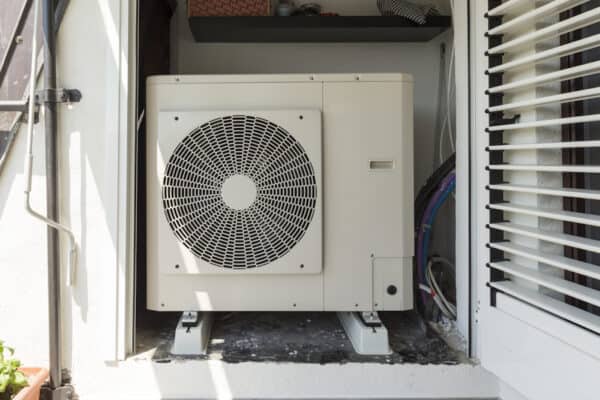How Does a Heat Pump Work in Winter? (Simple Explanation)
In the winter, the ambient temperature can drop below freezing point and you are wondering how does a heat pump work in such a cold environment. So, I did some research.
Heat pumps are able to make their refrigerant colder than the ambient air which allows the refrigerant to absorb heat from the ambient air. Then, the refrigerant goes into the heat pump condenser unit which is located inside your house to provide warm air and heat up your house.
It is quite fascinating that a heat pump is able to absorb heat when the outside temperature is already very cold. So, what exactly happens inside a heat pump?
How Heat Pumps Work?
Just like any air conditioner, heat pumps use the refrigeration cycle to transfer heat.
I’ve made a simple heat pump energy transfer diagram below to help you understand the basic working principle of heat pumps.
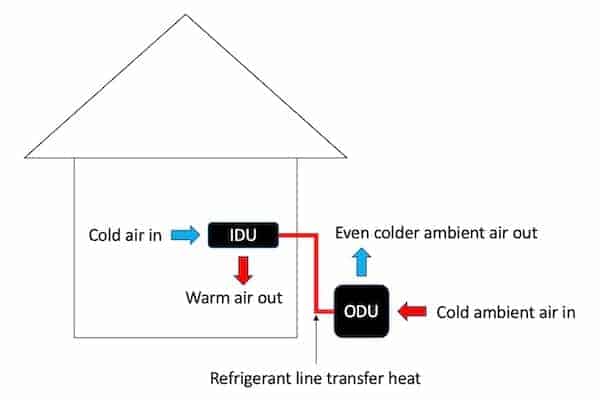
A heat pump absorbs heat by circulating the ambient air through its outdoor unit (ODU). Then, the heat energy is transferred via the refrigerant line to the indoor unit (IDU) where it circulates the air inside your house to release the heat energy into your house.
In order for the heat pump to be able to absorb heat from the ambient air when it is already very cold outside, it must be at a lower temperature than the ambient air.
Inside a heat pump, there is a specific type of fluid flowing in between the indoor unit and the outdoor unit. Usually, the fluid is called the R410A refrigerant.
What’s so special about the R410A refrigerant is that it is able to boil at -10°C (14°F) compared to water which boils at 100°C (212°F). Hence, engineers force the R410A refrigerant to always be at a much lower temperature than the ambient air to absorb heat from the ambient air.
Alternatively, you can imagine that the ambient air is “cooking” the refrigerant.
After the refrigerant absorbed the heat from the ambient air, it travels to the compressor and gets pressurized to an even higher temperature, usually around 40°C (104°F).
Then, the compressor “pushes” the hot refrigerant to the indoor unit inside your house and the indoor blower fan circulates air through the hot condenser coil to warm up your house.
Warm air coming out of the heat pump indoor unit is usually around 35°C (95°F). So, the heat pump keeps cycling until your house is sufficiently heated.
When the ambient air temperature drops, the heat pump will adjust itself to make the refrigerant even colder than the ambient air to ensure that it keeps absorbing heat from the ambient air and provides heating to your house.
Heat Pump Temperature Limitation
Most heat pumps gradually lose their heating capability when the ambient temperature is falling below 8°C (47°F). However, certain heat pump models are capable of maintaining their rated heating capacity even when the outside air falls beyond the freezing point.
These cold weather heat pumps are more expensive but they work very well in the winter. You can check out my post on mini splits working in cold climates to understand in detail.
Some heat pumps are ductless and they are further known as ductless mini-split heat pumps. Meanwhile, some central air conditioners are available in the heating mode which makes them essentially central heat pumps.
Most ductless mini-split heat pumps stop working at a temperature of -15°C (5°F). They have a safety device that may act to stop the operation of either the indoor unit and outdoor unit or just the outdoor unit to protect the system from damage.
However, some ductless mini-split heat pumps stop working only when the ambient temperature reaches -30°C (-22°F) which is more than enough for most places.
Heat Pump Freezing Up in Winter
One of the characteristics of heat pumps in the winter is freezing. Because the outside air temperature falls below freezing point, condensate water formed on the heat pump evaporator coil will turn into ice.
The outdoor unit of heat pumps has an evaporator coil that is colder than the ambient air. Remember I said the refrigerant must be colder than the ambient air in order to absorb heat from the ambient air?
Condensation naturally occurs on the evaporator coil when its surface temperature drops below the dew point of the air. Hence, water droplet forms and freeze up.
So, a heat pump gradually freezing up while working in the winter. Once the ice is too thick, the heat pump can’t transfer heat energy anymore. Thus, it’ll automatically begin a defrosting process.
Usually, heat pumps take about 10 minutes to defrost. During this period, you often don’t have any warm air blowing out of the heat pump indoor unit.
However, some heat pumps use an auxiliary heater or electric heater to defrost. Hence, they are able to keep heating your house without having to stop for defrosting.
Conclusion
Heat pumps are widely used to provide heating and cooling for many homes. They are engineered to absorb heat from the ambient air and use it to warm up houses. Though heat pumps may not work effectively in extremely cold places, they are still a very efficient heating solution.
Lastly, consider my Mini Split (eBook) if you want to know how can you use Mini Split in your house. If you still have doubt or not feeling confident enough, feel free to consult me.
Consultation Service
Ask me for HVAC advice such as brand selection, best model, benefits, features, placement, duct size, grille size, how to design, design check, verification and other HVAC related queries.
If you have anything to add (or ask) about this topic, leave a comment down below!


